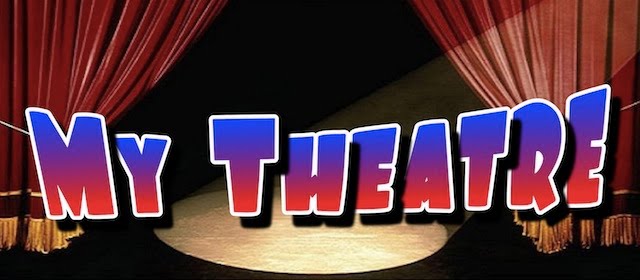by Brian Balduzzi
Peter Shaffer's Equus has seen many notable productions since it was written in 1973, including a 1976 Broadway production featuring Anthony Hopkins and Peter Firth playing Dr. Martin Dysart and Alan Strang, respectively. Most recently, I saw the 2009 Broadway revival with Richard Griffiths and Daniel Radcliffe tackling the same roles. While appreciating the production and loving the script, I was not impressed with the theatricality and storytelling of the play until I saw Theatre@First’s innovative production.
Any of the company’s limitations in resources appeared purposeful and creative. The first delight came in the performance venue: a church. The play features an abundance of themes, mostly centered on religion, sexuality and societal norms. The basement of a church provided a stark reminder of the play’s applicability to our daily lives as we find our own “supergods” to worship- though perhaps not to the same extent as Alan Strang.
Theatre@First’s production of Equus featured two strong departures from the script: a female Dr. (Martine) Dysart and a lack of nudity onstage (more on that later). To start, I had reservations about the gender change; I thought there was something tied to the male-male bond between Dr. Dysart and his young patient, Alan. I will admit that I was wrong. Elizabeth Hunter, also the company’s founding Artistic Director, found new levels and relationships that I'd never seen before in a production of Equus. Hunter was electric onstage, starting from her opening monologue. Her analytical detachment was a strong choice and transitioned well into her later questioning emotions, as she wondered, with the audience, “What life am I leading and why?” Hunter captured the audience and she truly steered the show’s rhythm by establishing phenomenal chemistry with each cast member.
I loved whenever Hesther Salomon (played by Melissa Ehlers) shared the stage with Dr. Dysart. The two female character had a clear history with each other and the actresses played astounding well off of each other. To be honest, I had forgotten Ehler’s character in the Broadway revival, but Ehlers made her memorable as the insistent yet empathetic court magistrate.
Also particularly outstanding was Jill Mason (played by Lauren Strand). Strand’s coy flirtatiousness created much-needed humor late in the play and she proved a true comedian with her flawless timing and sly glances in an awkward encounter with Alan (played by Adam Schofield-Bodt) and his father, Frank Strang (played by Johnbarry Green). Schofield-Bodt was tolerable as Alan, though I'll admit that my strong dislike of his first scene with Dr. Dysart might have prejudiced me against him too early on. His tantrums and strange aloofness fell flat in the beginning, but he warmed up nicely towards the end. The actor might just have had an “off” start to that afternoon performance.
More discouraging was Green’s performance. I am not sure if it was the change from a male to a female psychiatrist that made the father’s role inconsequential or Green’s interpretation of a bullying, atheist (verging on genocidal) patriarch. Either way, the character was completely lost.
Jo Guthrie created an appropriate and tasteful set design; while nothing elaborate or innovative, the set didn't inhibit the action, despite the frequent changes in location. I tend to be insistent on a strong use of lighting design, especially in a show with multiple settings. Giles Hall lit the stage well enough, but he never truly reached the fullest potential, especially given the show’s late turn for the cerebral.
Otherwise, I'll admit that there were some things about this production that I simply didn't get. The use of television images on Alan’s face, for example; I couldn't really see them clearly so have no hope of properly judging the merits of that artistic choice. But I was perhaps most confused by Dave Policar’s directing choice to omit the nudity. Even Daniel Radcliffe didn't consider the nudity “gratuitous,” and willingly bared all, despite the media’s crude humour about it. I understand the director and actors’ reluctance to appear naked with the audience in such close proximity or, especially, in a church. But with the decision to ignore the famous stage direction, the scene lost some of its vitality, energy and shock. A lot of companies avoid the nudity issue, but I really do think it takes away from the play's visceral quality.
But despite my issues with that one major decision, I thoroughly enjoyed this production, including much of the direction. Theatre@First created a thought-provoking, engaging and, dare I say, inspiring production. I look forward to seeing their future works, especially if Elizabeth Hunter is featured again onstage.
Subscribe to:
Post Comments (Atom)



No comments:
Post a Comment